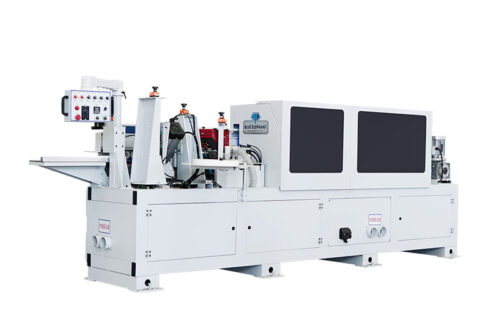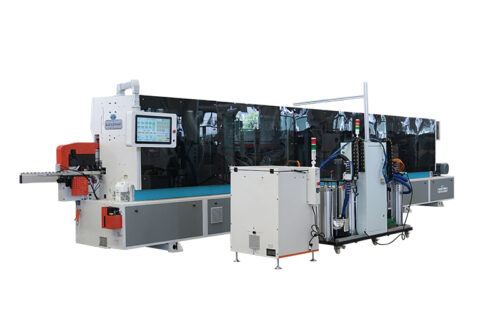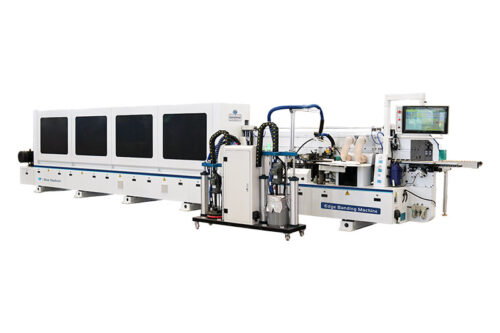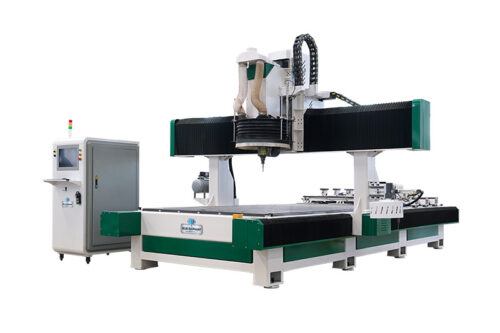I’ll never forget the first time I miscalculated a CNC machine’s axis capabilities. The part was clamped, the program was set, and I was confident—until the machine froze mid-cut. It wasn’t broken. I just didn’t understand its limits.
That mistake cost me time and money. But it taught me a lesson: not all CNC machines are the same, and knowing how many axes you need can save you from costly errors.
If you’re here, you probably want to know how many axes a CNC machine can have—and which one suits your needs.
I’ve spent years working with CNC machines, understanding their functions, and helping others make smart choices.
By the end of this article, you’ll know exactly how to identify a CNC machine’s axis count and what it means for your projects. No confusion. No wasted money. Just clear, practical guidance.
Let’s dive in!
1. What is a CNC Machine Axis
The first time I saw a CNC machine in action, I was amazed. A metal block transformed into a complex part—without a single manual adjustment. It was a far cry from the manual machining I had worked with before.
So, what makes CNC different?
CNC (Computer Numerical Control) machines operate using pre-programmed instructions instead of manual controls. Unlike traditional machining, where an operator moves tools by hand, CNC machines follow a precise set of commands, providing consistency and efficiency.
The key to this precision is automation.
- G-code Programming: This is the language CNC machines understand. It tells the machine where to move, how fast to go, and what actions to take, such as cutting, drilling, or milling.
- Repeatability: Once programmed, a CNC machine can produce identical parts multiple times with minimal error.
- Complex Geometries: CNC machining allows for intricate shapes and cuts that would be difficult or impossible to achieve manually.
That brings us to the core question: how does a CNC machine move? The answer lies in its axes.
Key Components of CNC Machines
Every CNC machine has essential parts that work together to achieve precise movement across multiple axes.
- Controller: This is the command center of the CNC machine. It reads the G-code and translates it into electrical signals that direct the machine’s movements.
- Machine Tool
- Spindle: Rotates cutting tools at high speed.
- Cutting tools: Includes end mills, drills, and lathes that remove material from the workpiece.
- Motors and Drive System: A CNC machine doesn’t move on its own. It relies on servo motors and stepper motors to control each axis. These motors adjust speed and precision, allowing movement in multiple directions.
- Workholding Devices: Without stability, even the best CNC machine will fail. Common workholding solutions include:
- Clamps and Vises: Secure metal and wood pieces in place.
- Fixtures: Hold irregularly shaped parts to prevent movement during machining.
- CAD/CAM Software: Before a CNC machine makes a single cut, the part must be designed. That’s where CAD (Computer-Aided Design) and CAM (Computer-Aided Manufacturing) software come in.
- CAD software: Creates the design.
- CAM software: Converts the design into G-code for the CNC machine to execute.
A CNC machine’s performance depends on how well these components work together—and on how many axes it has.
So, how many axes does a CNC machine need for your work? Is a 3-axis setup enough, or should you consider 5-axis or more?
Let’s explore the different axis configurations next.
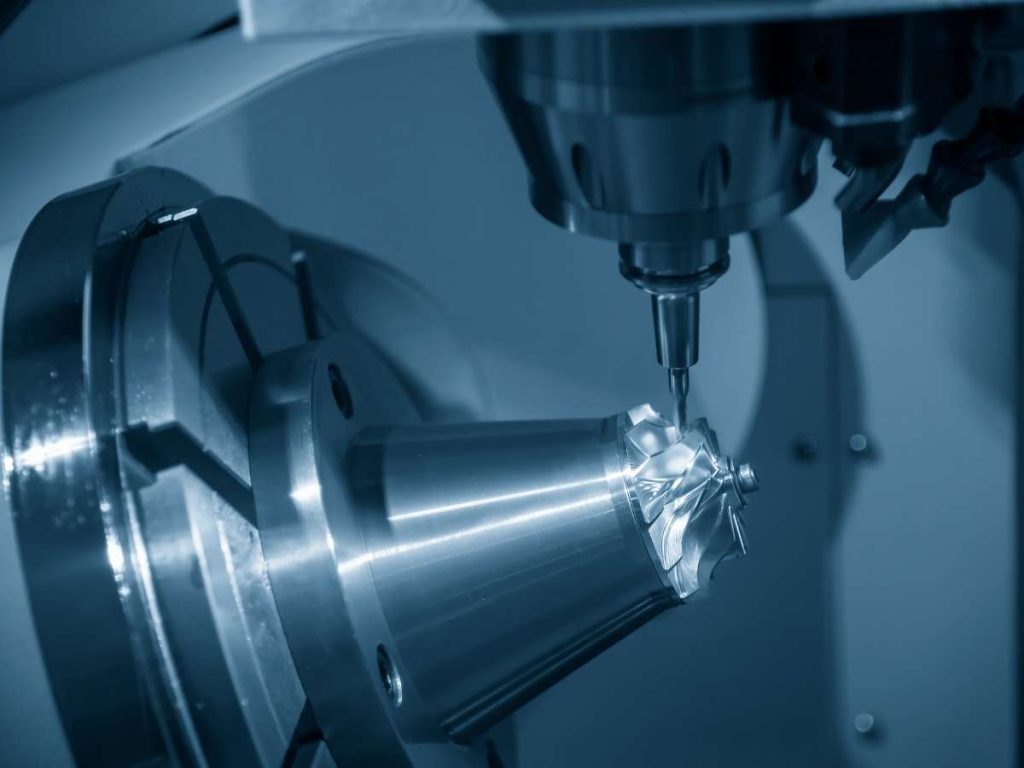
2. Different CNC Machine Axis Configurations
If you’re wondering how many axes your CNC machine needs, you’re not alone. Whether you’re cutting simple shapes or working on high-precision aerospace parts, choosing the right axis configuration is essential. Let’s break down the most common types and what they offer.
3-Axis CNC Machines
Movement: X, Y, and Z (linear movement only)
Common Applications:
- Woodworking and furniture carving
- Sign-making and engraving
- Mold and die production
Pros:
- Simple to use
- Affordable and widely available
- Works well for flat and shallow cuts
Cons:
- Cannot machine undercuts or curved surfaces without repositioning
- Limited to three linear movements
Most CNC users start with a 3-axis machine because it handles many basic machining tasks. But if you’ve ever needed to cut along a curved surface or mill multiple sides without flipping the workpiece, you’ve probably felt the limitations.
4-Axis CNC Machines
Additional Axis: A-axis (rotary movement around the X-axis)
Common Applications:
- Complex engraving and curved surface cutting
- Milling cylindrical objects, such as chair legs and pipes
Pros:
- Allows side cutting without repositioning
- More precise than a 3-axis machine
Cons:
- Slightly higher cost
- Steeper learning curve
I remember a project where I needed to carve a cylindrical mold for a custom part. With a 3-axis machine, I had to rotate the piece manually, which led to misalignment issues. Switching to a 4-axis machine eliminated that problem by rotating the part automatically, improving precision.
Would a 4-axis machine be enough for your work, or do you need even more flexibility? Let’s look at 5-axis machines next.
5-Axis CNC Machines
Additional Axes: A-axis and B-axis (rotary movement around X and Y)
Common Applications:
- Aerospace and automotive parts
- High-precision mold making
- Medical implants and prosthetics
Pros:
- Eliminates the need for multiple setups
- Improves accuracy for complex parts
- Reduces machining time
Cons:
- High cost
- Complex programming and maintenance
The first time I saw a 5-axis machine in action, I was blown away. The spindle moved at angles I didn’t think were possible, cutting a complex aerospace component in one go. If you work in high-precision industries, this machine can be a game-changer.
However, the added complexity means higher costs and more advanced programming. If you’re not machining intricate parts, a 4-axis machine might be a better investment.
6-Axis and Beyond
Extra Axes: Continuous rotation or tilt movement (C-axis)
Common Applications:
- Ultra-high precision metal cutting (turbine blades)
- Industrial robotics and automation
Pros:
- Maximum flexibility and accuracy
- Handles the most complex machining tasks
Cons:
- Very expensive
- Requires specialized expertise
Machines with 6 or more axes are typically used in aerospace, robotics, and advanced manufacturing. These machines can move in ways that mimic a human wrist, allowing for unmatched precision.
If you’re running a high-volume production facility or working with extremely detailed parts, a 6-axis machine might be worth the investment. Otherwise, a 4- or 5-axis machine will likely meet your needs.
3. CNC Axis Upgrades: When to Upgrade from 3-Axis to Multi-Axis
I remember the first time I realized my 3-axis CNC machine wasn’t cutting it—literally. A complex part required multiple setups, and despite my best efforts, alignment issues crept in. Every adjustment meant more time, more material waste, and more frustration. That’s when I started looking into multi-axis machines.
If you’re facing similar challenges, it might be time to upgrade. But how do you know for sure? Let’s break it down.
Signs You Need an Upgrade
A 3-axis machine works well for simple cuts, but as your business grows, you may run into limitations. Here are some clear signs that it’s time to consider an upgrade.
- Struggling With Manual Repositioning: If you often rotate or reclamp parts to reach different angles, you’re wasting time and risking misalignment.
- Handling More Complex Designs: If customers want intricate or curved parts, and your current machine can’t deliver, it’s time to consider multi-axis options.
- Losing Jobs to Competitors: When competitors offer better machining capabilities and win the projects you can’t handle, it’s a clear sign to upgrade.
- Turning Down Bigger Orders: If your current setup limits production volume or complexity, you’re leaving growth opportunities on the table.
Cost vs. ROI of Upgrading
Upgrading from a 3-axis to a multi-axis CNC machine is a big decision. The upfront investment is significant, but the long-term benefits often outweigh the costs.
Initial Investment vs. Long-Term Productivity
- A 4-axis CNC machine costs 30-50% more than a 3-axis model but eliminates manual repositioning.
- A 5-axis machine is expensive, but it saves labor time and material waste by machining all sides in one setup.
A shop I worked with upgraded to a 5-axis CNC machine for custom aerospace components. The initial cost was steep, but within a year, they doubled their production capacity and landed higher-value contracts.
Operational Costs for Different Axis Configurations
- 3-axis machines: Lower upfront cost but require more manual labor and longer machining times.
- 4-axis machines: Mid-range cost with improved efficiency and reduced setup time.
- 5-axis machines: Higher cost but minimal human intervention, reducing waste and increasing throughput.
The key question is: Will the upgrade bring in enough new business and efficiency to justify the cost?
Is It Time to Upgrade?
If you’re spending more time repositioning parts, struggling with precision, or losing business due to design limitations, upgrading makes sense. But if your current machine still meets your needs, it might not be the right time.
What are your biggest machining challenges? Are you ready to invest in better efficiency and precision? Understanding your workflow will help you make the right decision.
4. Common CNC Machine Problems Based on Axis Count
Every CNC machine—whether 3-axis, 4-axis, or 5-axis—has its own set of challenges. Below is a breakdown of the most common problems based on axis count and practical solutions to keep your machine running efficiently.
| Axis Count | Common Problems | Solution |
| 3-Axis CNC Machines | Limited capability for complex cuts: Struggles with curved surfaces, undercuts, and intricate angles. Requires multiple setups, increasing errors. | Upgrade to a 4-axis machine for rotary movement or a 5-axis machine for full flexibility. If upgrading isn’t an option, use specialized jigs and fixtures to reduce repositioning. |
| Higher labor costs due to manual repositioning: Operators must rotate and re-clamp workpieces, increasing production time and labor expenses. | Implement modular workholding solutions to speed up part repositioning. Consider automation options, like pallet changers, to reduce human intervention. | |
| 4-Axis CNC Machines | Increased software complexity: More advanced toolpaths require a higher level of programming knowledge. | Invest in operator training on CAM software and multi-axis programming. Use simulation tools to test toolpaths before running actual jobs. |
| Higher maintenance needs: More moving parts lead to more frequent wear and tear, requiring extra upkeep. | Schedule preventive maintenance to check for misalignment and lubrication issues. Keep spare rotary components on hand to minimize downtime. | |
| 5-Axis CNC Machines | Complex calibration and alignment issues: Small misalignments in rotary axes can lead to precision errors. | Use laser calibration tools to check alignment regularly. Implement machine probing systems for automatic error correction. |
| Higher machine cost and risk of downtime: Advanced machines require skilled operators, making errors more costly. | Focus on staff training and preventive maintenance. Ensure operators understand toolpath optimization to avoid machine crashes. | |
| 6-Axis and Beyond | Extensive programming and setup time: Multi-axis movement increases the risk of tool collisions. | Use digital twin technology to simulate machining before production. Implement collision detection software in CAM programming. |
| High operating costs: Specialized components and repairs can be expensive. | Reserve high-axis machines for complex, high-margin jobs. For simpler parts, use lower-axis machines to reduce operating costs. |
I know the frustration of wasting hours on manual repositioning or dealing with software that feels more complicated than the machining itself. Looking at the table, you can probably see where your biggest CNC headaches are coming from. Maybe your 3-axis machine is holding you back, or your 5-axis setup is more trouble than it’s worth.
I’ve had to make the same tough calls—upgrade, adapt, or find a workaround. Sometimes, a simple maintenance tweak or better training solves the problem. Other times, an upgrade is the only way forward.
5. Factors to Consider When Choosing CNC Machine
Buying a CNC machine isn’t just about picking the one with the most features—it’s about finding the right fit for your business, your projects, and your budget. I’ve seen companies regret their purchase because they didn’t consider maintenance costs, software complexity, or future production needs.
Before making a decision, here are the key factors you should think about.
What’s Your Primary Application?
Start by focusing on the type of projects you plan to handle most often. For basic woodworking, engraving, or decorative pieces, a 3-axis or 4-axis CNC router is usually enough.
If your work includes complex molds or multi-sided parts, a 4-axis or 5-axis machine will save time and improve accuracy.
For industries like aerospace or medical, a 5-axis or 6-axis machine is essential for producing high-precision components.
Budget Considerations
CNC machines can be a large upfront investment, and the cost typically increases with axis count and automation features. A 3-axis machine is budget-friendly and great for entry-level work, while a 4-axis adds flexibility without overwhelming cost. Higher-axis machines come with a premium price, but they often pay off by reducing labor and improving turnaround times.
Software & Programming Requirements
As axis count increases, so does programming complexity. 3-axis machines are beginner-friendly and work with standard CAD/CAM software. In contrast, 4-axis and 5-axis machines need advanced CAM systems and operators who understand complex toolpaths.
If you don’t have experience with advanced CNC programming, consider the cost of training and software upgrades before buying. Also consider supplier that provide assistance just like Blue Elephant, our user-friendly machines come with pre-configured software and training support.
Maintenance & Repair Considerations
Every added axis brings more moving parts and more maintenance. 3-axis machines are simple to service, while 4- and 5-axis machines require regular rotary calibration and upkeep. High-end 6-axis machines often need specialized servicing, which can be costly and time-consuming. Before you buy, ask yourself: can you handle the maintenance or downtime if a critical part fails?
Conclusion
Choosing the right CNC machine isn’t just a technical decision—it’s a business decision.
Get it right, and you’ll save time, cut costs, and expand your production capabilities. Get it wrong, and you may end up wasting money on features you don’t need or struggling with outdated equipment.
If you’re looking for a dependable CNC machine supplier but don’t know what specific machine to choose. At Blue Elephant, our team recommends the right machine and provides training materials, videos, and online support.
Contact us for expert guidance on choosing the best CNC machine for your needs!
Explore More of Our Resources
Want to see more products? We’ve got plenty of options that might just be the perfect fit for you:
Still haven’t found what you’re looking for? Don’t hesitate to contact us. We’re available around the clock to assist you.


